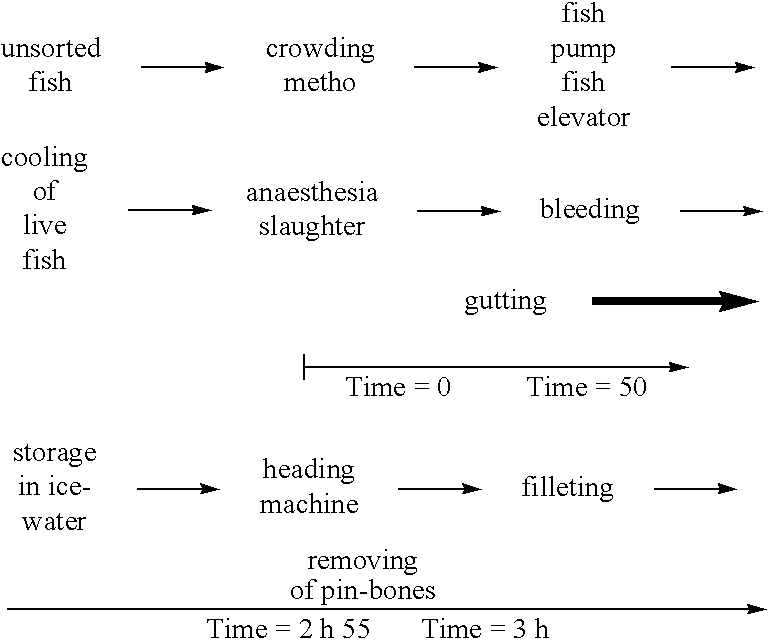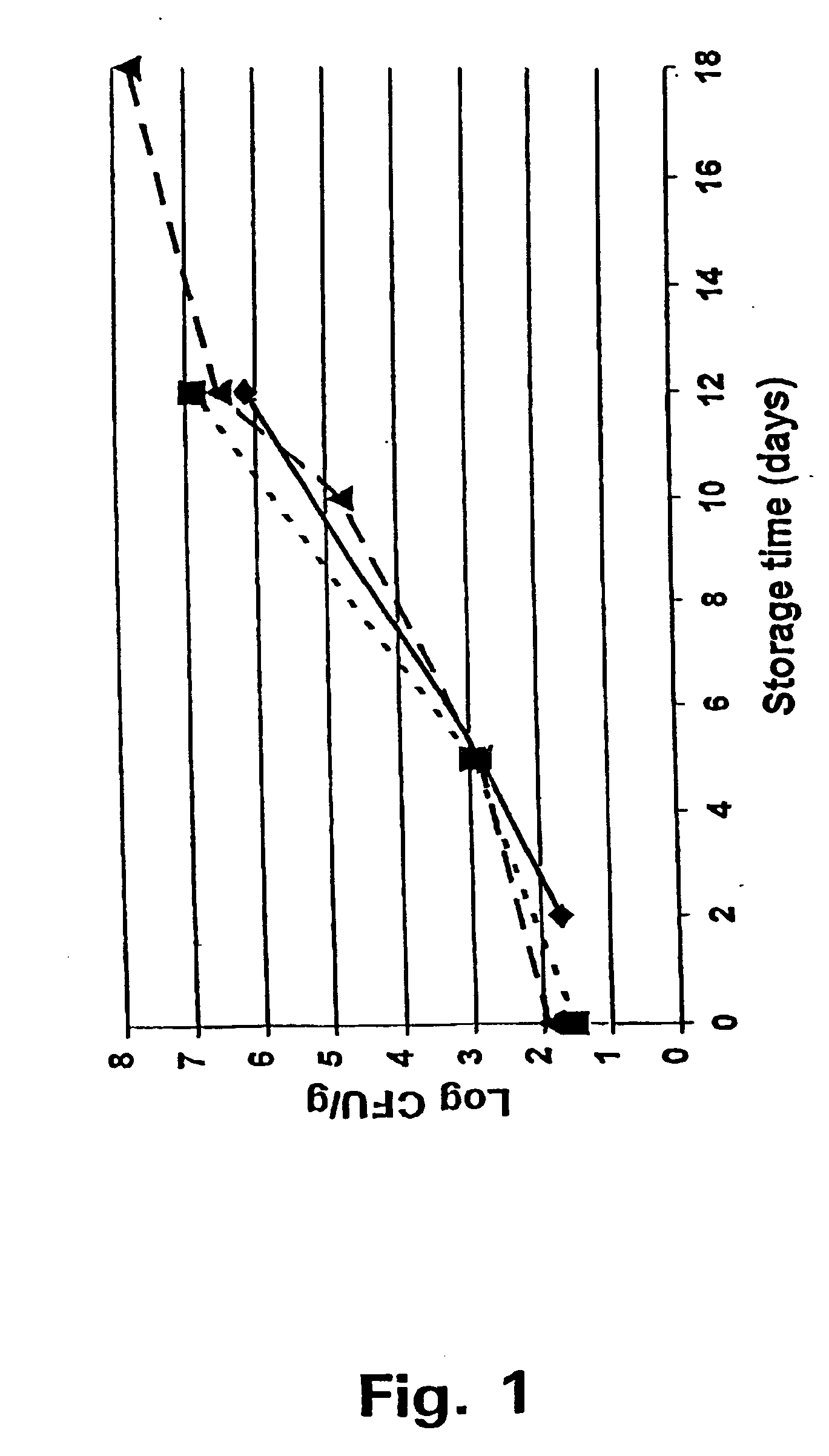Method for the manufacture of raw fish products
- Summary
- Abstract
- Description
- Claims
- Application Information
AI Technical Summary
Benefits of technology
Problems solved by technology
Method used
Image
Examples
example 1
PROCESS LINES FOR PRODUCTION OF FISH PRODUCTS
[0061] As illustrated in Table 1, the conventional post-rigor method for boning of fish is carried out after a storage period of 3-8 days. After that period pin-bones can easily be removed from the fish and thus, post-rigor raw fish meat products without bones are obtained.
[0062] As a contrast hereto, the method of the present invention is illustrated In Table 2 wherein the processing of the fish is performed before resolution of rigor. As can be seen from this figure, the time for processing may be reduced to about 3 hours. Filleting is performed by the conventional method, however, the pin-bones are removed manually or automatically by excising the meat parts of the fish containing the pin-bones whereby a pro-rigor fish meat product is obtained.
1TABLE 1 Illustrates a process line for the production of conventional post-rigor fish meat products. This process Involves the storage of the fish until resolution of rigor where after the pin-b...
example 2
MICROBIAL QUALITY OF CONVENTIONAL FISH PRODUCTS (POST-RIGOR) COMPARED TO IN-RIGOR AND PRE-RIGOR FILETS
[0064] The microbial quality of Atlantic salmon fillets processed pre-, in- and post rigor was analysed by filleting the salmon after different storage periods after slaughter, namely pre-rigor, in-rigor and post-rigor.
[0065] Experimental Conditions
[0066] Two individual experiments were carried out to study microbial growth and other freshness factors of the salmon fillets. In experiment 1 only total viable counts (TVC) were analysed. Experiment 2 was extended by analysing TVC and H.sub.2S-producing bacteria, and the quality parameters odour, texture and gaping.
[0067] Experiment 1:
[0068] Atlantic salmon (Salmo salar) with a mean weight of 3.7 kg were live-chilled from a seawater temperature of 8.degree. C. to a body temperature of approximately 1-2.degree. C. by keeping the fish for 45 minutes in a chilling tank with a temperature of 1.degree. C. prior to harvest. The temperature wa...
experiment 2
[0070]
[0071] Atlantic salmon with a mean weight of 3.6 kg were live-chilled from a seawater temperature of 5.5.degree. C. to a body temperature of approximately 1-2.degree. C., as described in experiment 1. A total of 84 whole salmon were either filleted pre rigor, in-rigor or post-rigor and otherwise treated and stored as described in experiment 1.
[0072] In this experiment the fillets were used as whole fillets, and not cut into pieces. One group was packaged in vacuum and one group stored in air. For each sampling date, 4 new vacuum packaged fillets and 4 new fillets packaged in air were analysed.
[0073] Microbial Quality
[0074] Samples of 25 g were taken from the middle of salmon pieces obtained as described in experiment 1 or between the dorsal fin and the anal fin on whole fillets obtained as described in experiment 2. The samples were homogenised in 250 ml of 0.9% NaCl (w / v) and 0.1% peptone (w / v) for 120 seconds in a Stomacher 400 Laboratory Blender (Seward). Total Viable Count...
PUM
 Login to View More
Login to View More Abstract
Description
Claims
Application Information
 Login to View More
Login to View More - R&D
- Intellectual Property
- Life Sciences
- Materials
- Tech Scout
- Unparalleled Data Quality
- Higher Quality Content
- 60% Fewer Hallucinations
Browse by: Latest US Patents, China's latest patents, Technical Efficacy Thesaurus, Application Domain, Technology Topic, Popular Technical Reports.
© 2025 PatSnap. All rights reserved.Legal|Privacy policy|Modern Slavery Act Transparency Statement|Sitemap|About US| Contact US: help@patsnap.com



